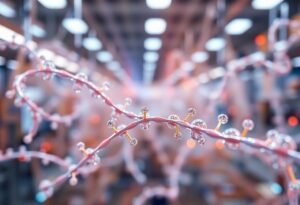The integration of Artificial Intelligence (AI) into creative industries marks a significant shift in innovation practices. AI has the potential to revolutionize the way art, music, literature, and design are created, pushing boundaries and inviting new forms of expression. This article explores how AI influences these sectors, impacting creativity and productivity.
The Role of AI in Art Creation
In recent years, many artists have begun utilizing AI technologies to enhance their creative processes. Machine learning algorithms can analyze vast datasets of previous artworks, generating new pieces based on learned styles and techniques. This not only allows artists to experiment with their work but also opens up unique dialogue around the intersection of technology and creativity. For example, AI-generated art has gained significant traction in galleries worldwide, showcasing the collaboration between man and machine. The implications of AI-assisted art challenge traditional concepts of authorship and value in artistic creation.
AI and Music Composition
The music industry is also witnessing profound changes thanks to AI innovation. Tools like OpenAI’s MuseNet and Google’s Magenta project enable composers to create original compositions or assist in the arrangement of existing pieces. By analyzing trends and patterns in popular music, AI systems can help musicians produce hits that resonate with audiences. Additionally, these technologies democratize music creation, allowing emerging artists access to high-level composition tools previously reserved for professional studios. The collaboration of AI with human musicians highlights a future where creativity is enhanced rather than replaced.
Impact on Literature and Writing
AI technologies are transforming the literary world as well, offering new ways for authors to draft, edit, and publish. Programs like Grammarly and Sudowrite use AI to assist writers in refining their work—improving grammar, style, and even suggesting plot developments. These tools serve as virtual writing partners, helping to streamline the creative process. Moreover, AI-generated stories are emerging, simulating human authorship while questioning the essence of storytelling itself. As writers embrace this AI influence, the narrative landscape evolves, fostering innovation in written expression.
The Future of Design With AI
Design industries are leveraging AI’s capabilities to enhance creativity and efficiency. AI tools such as Adobe Sensei automate repetitive tasks, allowing designers to focus on innovative aspects without hindrance. Furthermore, generative design software utilizes AI to produce multiple design variations based on specified parameters, enabling designers to explore uncharted territories. As industries continue to embrace AI, the traditional design workflow transforms, underscoring the significance of technology in shaping the future of creativity.
Ethical Considerations in AI Innovation
As AI integration deepens in creative fields, it opens conversations around ethical implications. Questions about ownership, creativity, and human value arise when machines contribute to artistic processes. Stakeholders must navigate these complexities thoughtfully, ensuring that the presence of AI enhances rather than diminishes the role of human creativity. Ethical guidelines will need to be established that govern the intersection of AI and creativity, fostering an environment where innovation can thrive in a responsible manner.
The Balance Between AI and Human Creativity
Ultimately, the challenge lies in balancing AI’s capabilities with inherent human creativity. While AI can automate certain aspects of creative processes, it cannot replicate the emotional depth and experience that human creators bring to their art. Future innovations will likely position AI as a tool that complements and amplifies human creativity, rather than a replacement. Embracing AI’s potential, while valuing human intuition, can lead to a vibrant future for the creative industries.
Disclaimer: The views expressed in this article are for informational purposes only and do not constitute professional advice.





















